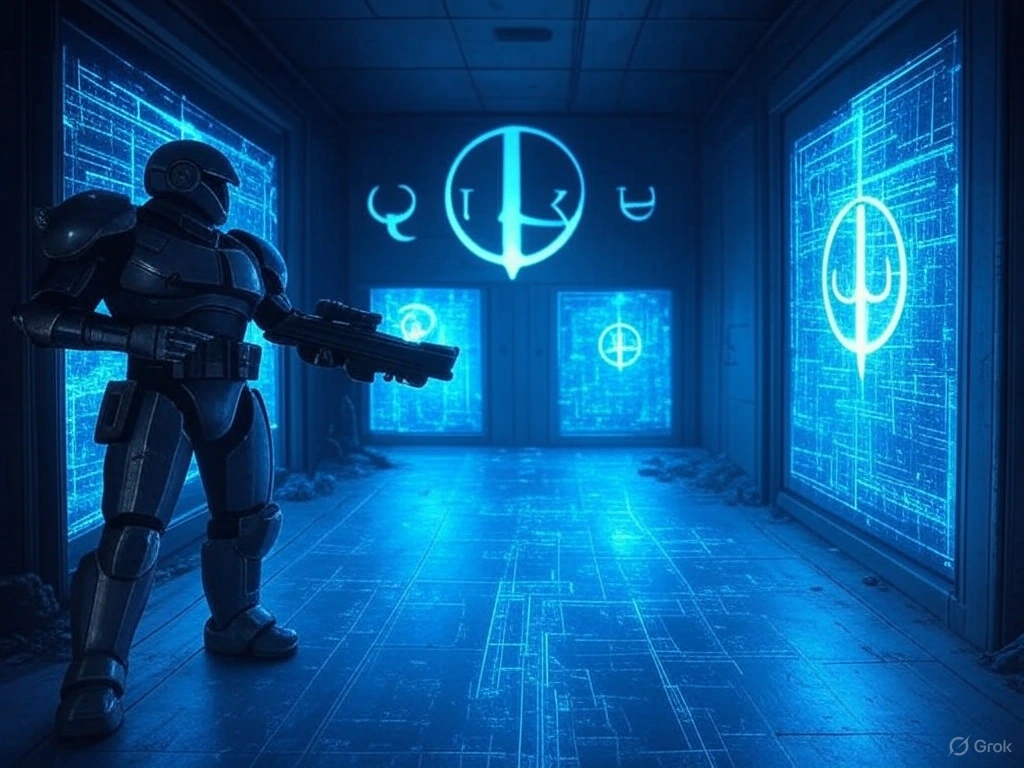In an inspiring blend of nostalgia and forward-thinking innovation, Microsoft has reimagined the classic first-person shooter, Quake II, by seamlessly integrating groundbreaking artificial intelligence into its gameplay. This fresh take on a 1997 legend isn’t just a tribute to gaming’s storied past—it’s a bold step toward redefining the future of interactive entertainment in ways that gamers and tech enthusiasts alike can easily connect with.
A Fresh Spin on a Timeless Classic
Microsoft’s latest demo, unveiled through the experimental Copilot Labs, invites players to dive back into the chaotic corridors and hidden secrets of Quake II—but with an AI twist that makes every action feel uniquely responsive. Instead of relying on years of gameplay data, Microsoft’s innovative WHAMM (World and Human Action MaskGIT Model) was trained on just one week’s worth of meticulously chosen footage. This precise data was curated by professional testers focusing on a single level, ensuring every in-game interaction is finely tuned, immersive, and deeply evocative of the original’s spirit.
An Immersive, Hands-On Experience
The revamped Quake II demo is anything but ordinary. Imagine a world where you’re not only the hero navigating a maze of danger but also an active participant in an evolving digital playground. Players can freely move the camera, jump, crouch, and engage in explosive combat, all while uncovering hidden secrets meticulously retained from the original design. This refreshingly interactive experience pulls players into an environment where every detail—from the texture of the virtual walls to the rhythmic timing of a hidden mechanism—feels authentically real.
The genius behind this demo lies in the fusion of cutting-edge AI with classic game mechanics. By leveraging the generative power of Muse, Microsoft has breathed new life into the visuals of Quake II. The result is a meticulously simulated world that mirrors the intensity of the original experience, yet pushes players to see familiar surroundings through a lens of futuristic innovation.
How It All Works
At the heart of this project is the WHAMM model—a streamlined approach to AI training that differs significantly from traditional, data-heavy methods. By focusing on a single, controlled environment, developers could achieve a level of precision previously thought unattainable. Professional testers honed in on the most critical aspects of the gameplay, leading to an AI that not only mimics realistic game actions but does so with an impressively high degree of fidelity.
This methodology drastically reduces the usual learning period. Instead of months or even years of data, just one week was enough to cultivate an AI capable of recreating the complex interplay of in-game events. This strategic focus has made way for a more nuanced, engaging experience without the clutter of extraneous information—allowing gamers to lose themselves in a visually striking, mechanically sound world.
Embracing the Quirks and the Future
Of course, no innovation comes without its growing pains. While the demo is a thrilling peek into tomorrow’s gaming, certain limitations remain. For instance, the enemy AI occasionally behaves unpredictably, and on-screen actions can sometimes feel a fraction too simplified. A brief “memory” span of 0.9 seconds means that off-screen elements may not always carry over perfectly when you return to them, occasionally causing minor inconsistencies in gameplay such as object persistence and health tracking.
Yet, these challenges are part of the journey toward a more seamless integration of AI in gaming. Microsoft’s experimental project is designed to explore what is possible, rather than to be the final word in perfection. Early iterations like this spark conversations among developers and players alike, setting the stage for iterative improvements that promise to revolutionize the industry even further.
Why This Matters to Gamers Everywhere
For many, Quake II is more than a game—it’s a symbol of a golden era in gaming history. By reintroducing it with an AI-powered twist, Microsoft not only honors a beloved classic but also illustrates how modern technology can reinvent the familiar, offering both comfort and excitement. This demo reminds us that innovation isn’t about discarding the past but about building bridges that connect cherished memories with visionary ideas.
Moreover, this project serves as a harbinger for the next generation of interactive entertainment. It paints a future where virtual worlds adapt, evolve, and respond dynamically to players’ actions. By turning a classic game into an interactive playground defined by intelligent design, Microsoft paves the way for richer, deeper gaming experiences that are sure to captivate a broad spectrum of audiences.
Conclusion Quake 2 Ai Game
Microsoft’s AI-driven reimagining of Quake II is a captivating testament to how technology can keep the spirit of classic games alive while pushing the boundaries of what’s possible. By merging a streamlined, focused AI training method with the evocative nostalgia of a gaming icon, this demo invites us to re-experience a cherished classic in a way that is both familiar and exhilaratingly new. Whether you’re a longtime fan of Quake II or a newcomer to the world of AI-powered gaming, this innovative project offers something to marvel at—an exciting glimpse into a future where interactive entertainment becomes ever more immersive, intelligent, and undeniably human.
Dive into this captivating journey and experience for yourself how the worlds of yesterday and tomorrow can collide in the most spectacular fashion.
